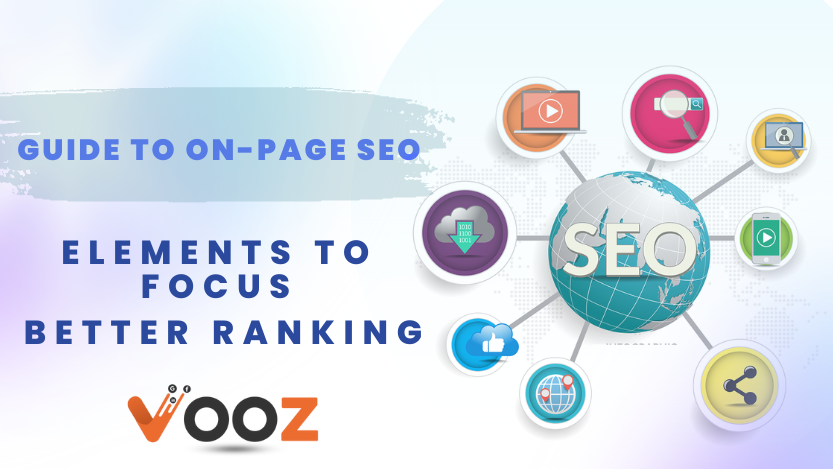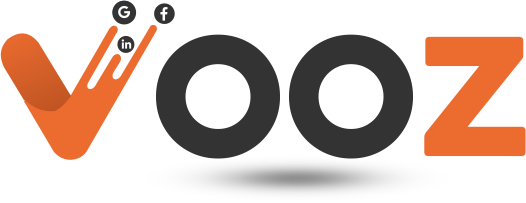
We all are aware that Search Engine Optimization (On-Page SEO) is an essential process of optimising one’s website or online content to rank higher in search engine results pages (SERPs). A higher ranking in SERPs can result in more traffic to your website, which can lead to more sales, leads, and revenue.
Every business nowadays focuses their efforts on the optimisation of their website, and to make it competitive in the promotional market.
One critical component of SEO is on-page optimization, which refers to the process of optimising individual web pages to rank higher and gain more relevant traffic. On-page optimization involves various factors, such as optimising content, meta tags, headings, images, internal linking, and other HTML elements.
Here in this article, we will know about the details of On-Page SEO, and its elements. We will also look into some of the best practices of SEO development through On-Page SEO.
Want More Conversions: 10 Proven Strategies to Optimise Your Website
What is On-Page SEO and How it Works?
On-Page SEO refers to the practice of optimising individual web pages to rank higher in search engine results pages (SERPs) and attract more relevant traffic. On-page SEO involves optimising various elements on a web page and providing the marketer with higher sales and a better number of viewers on the website.
The working of ON-Page SEO initiates with on-page SEO is keyword research. You need to identify the keywords that your target audience is using to search for your products or services, and then add your content with relevant keywords in the title, meta description, headings, and throughout the content. You should also make sure that your content is high-quality, informative, and engaging for your target audience.
After this, the optimization of meta tags takes place and headings are used to help structure your content and make it easier for readers and search engines to understand.
Images and Interlinkages are used to increase engagement and keep readers on your site longer. You should include internal links in your content and optimise the anchor text with relevant keywords.
Elements of On-Page SEO
There are some essential elements in the On-Page SEO development that are used to get a higher ranking over the internet. If one takes care of all these elements, then the chances of succeeding get higher. One becomes more presentable to the viewers.
So let’s take a deep dig into the essential elements of On-Page SEO.
1. Importance of Title Tag
The title tag is an essential element of on-page SEO and is considered one of the most critical factors in determining the relevance and ranking of a web page in search results.
Title tag appears at the top of the web browser window and in the search engine results pages (SERPs). The clickable headline for your web page. The title tag is one of the major things that internet crawlers see. The title tag can increase the Click-through rates (CTR) of any website.
So, the title tag is a crucial element in on-page SEO that can help improve the relevance, visibility, and engagement of your web page in search results.
The Complete Guide to Off-Page SEO: Techniques and Subdivisions
2. Keyword Placement in On-Page SEO
Keyword placement is an essential aspect of on-page SEO that refers to the strategic use of relevant keywords throughout a web page to improve its ranking in search engine results pages (SERPs) and attract more organic traffic.
The placement of keywords in the title tag, meta description, and content describes the authenticity of your website to the search engine and makes them show your website as the result of searched keywords.
With the increase in mobile searches, the placement of keywords in on-page elements. That is easily accessible on mobile devices, such as the title tag and heading tags. It’s even more critical in on-page SEO.
So, by strategically placing relevant keywords in on-page elements. You can attract more organic traffic, improve user engagement, and increase visibility.
3. Image Optimisation
The strategic use of images can improve the relevance, ranking, and user experience of a web page. Which makes image optimization an essential step to take in the ranking of your website.
Images are an effective way to communicate information and engage users on a web page. Search engines use algorithms that analyse the relevance. The quality of images on a web page determines its ranking in search results.
Large, uncompressed images can slow down the loading time of a web page. Which can negatively impact user experience and search engine ranking.
4. Importance of External Linking
External linking is an essential aspect of SEO that involves linking to relevant, authoritative websites from your web page. It establishes your web page as a credible and trustworthy source of information.
External linking can also help you build relationships and networks with other websites and bloggers in your niche. It can also increase the visibility of your web page in search results.
By linking to relevant sources, you can increase the likelihood of your web page appearing in related search queries and attracting more organic traffic.
5. The URL structure of On-Page SEO
The URL structure of a web page is an essential aspect of SEO that can have a significant impact on the relevance, ranking, and user experience of a web page.
A clear and concise URL structure can help search engines understand the relevance of the page and improve its chances of ranking higher in search results, and can make it easier for users to navigate to and remember your web page.
A clear and logical URL structure can help users and search engines understand the relationships between different pages on your website and improve the overall site structure and navigation.
Conclusion
In conclusion, by optimising various on-page elements such as title tags, content, images, external linking, and URL structure. You can improve the relevance, ranking, user experience, and visibility of your web pages in search results.
By investing in SEO, you can attract more traffic, engagement, and conversions to your website and achieve your marketing goals.
Frequently Asked Questions
- Why is on-page SEO important?
On-Page SEO is important as it determines the authenticity of your website to the search engines. Who eventually are responsible for passing on your website to the viewers with searched keywords over the internet.
- How can I improve my on-page SEO?
You can improve your on-page SEO by optimising various elements on your web pages, such as title tags, content, images, external linking, and URL structure.
- How long does it take to see results from on-page SEO?
You Can expect to see some improvement in your web page’s ranking. It’s traffic within a few weeks to a few months of implementing on-page SEO strategies. However, it depends on many other factors like the level of competition in your niche. The quality of your content, and the effectiveness of your on-page optimization strategies.
- How many keywords should I use on a web page?
There is no specific number of keywords you should use on a web page. The goal should be to use relevant keywords naturally and sparingly throughout the content and metadata of the page.
- Can on-page SEO alone guarantee top rankings in search results?
No, On-Page SEO can alone not guarantee the ranking of your website. There are other factors like off-page SEO, site authenticity, and competition, which determine the growth of your website over the web.





